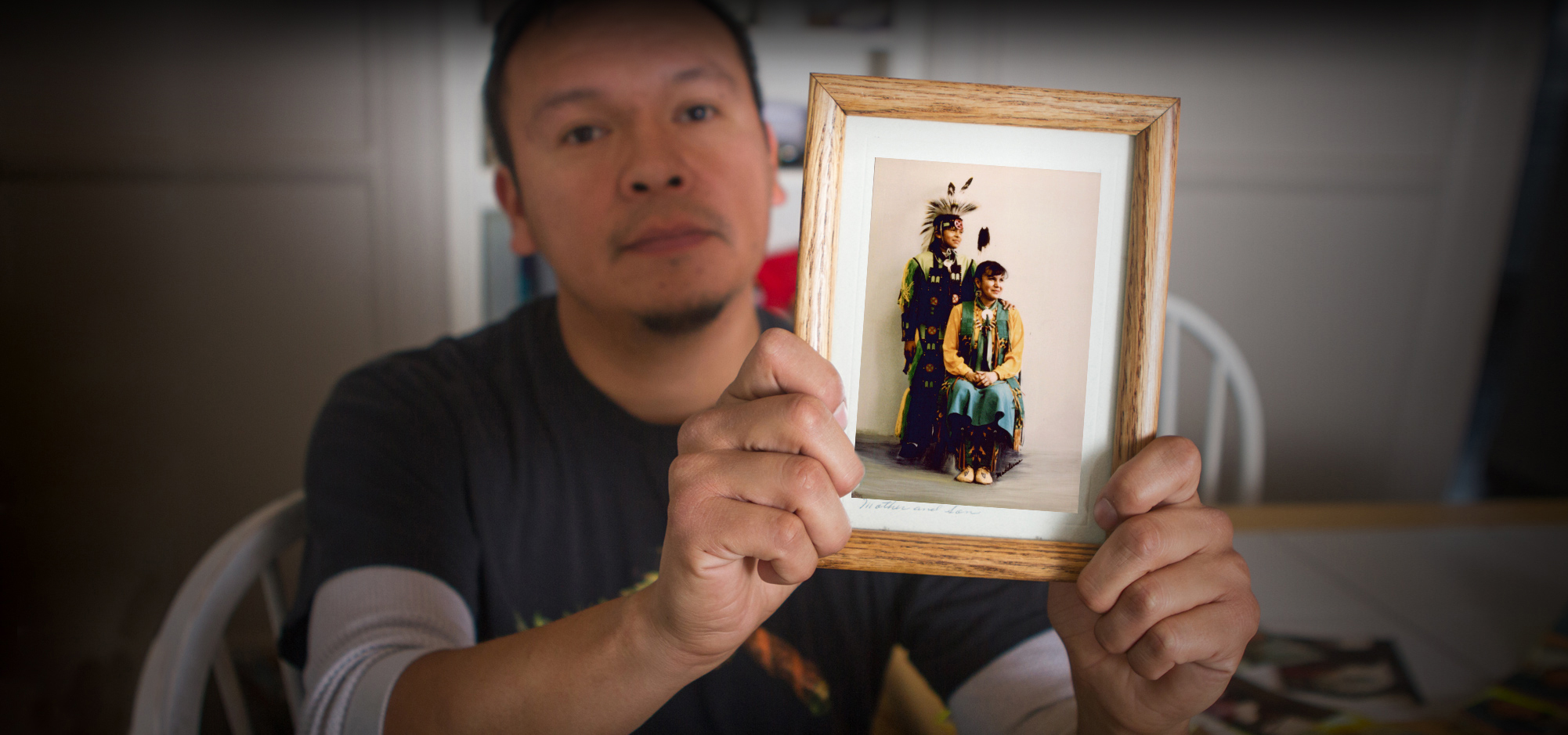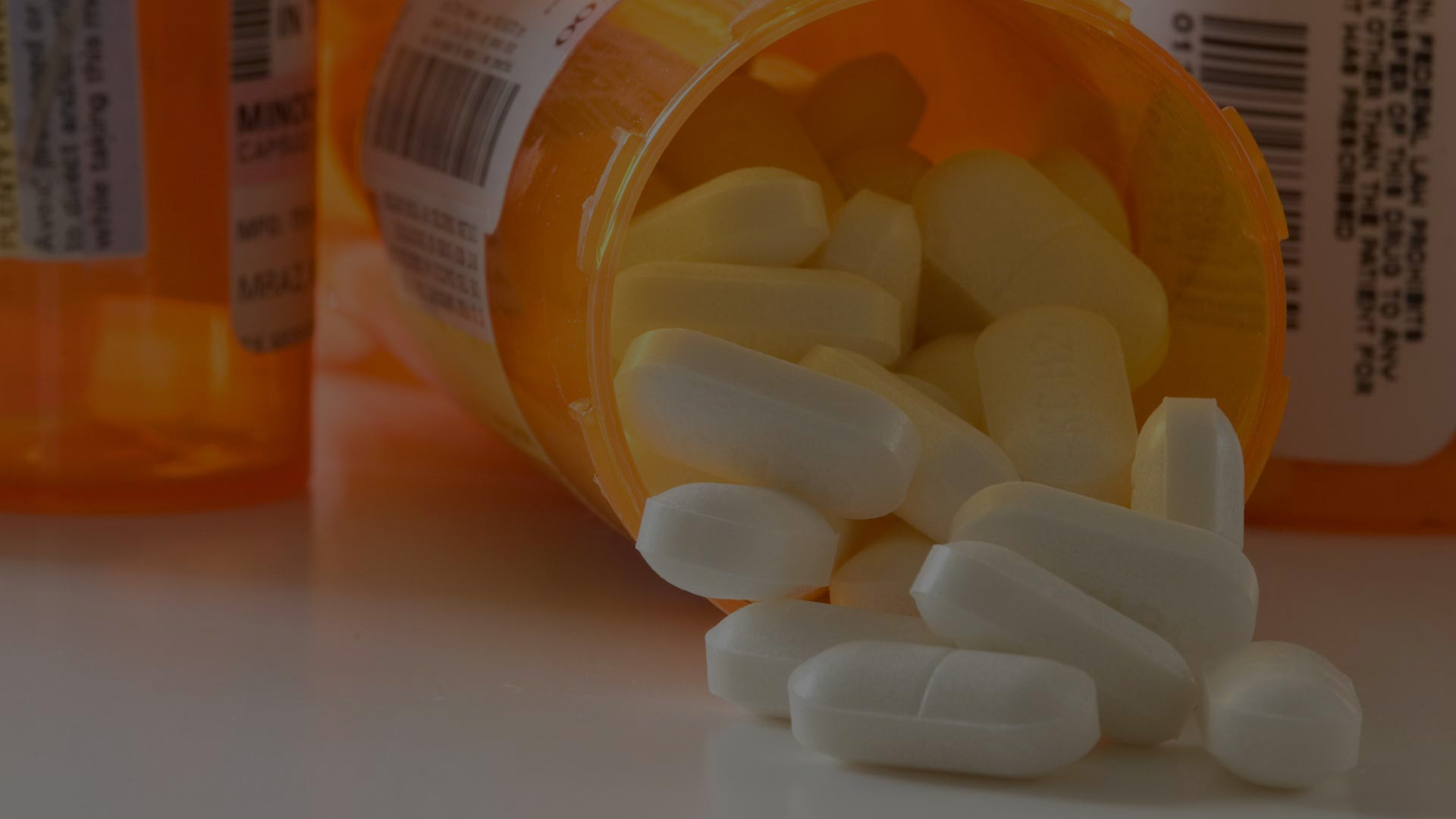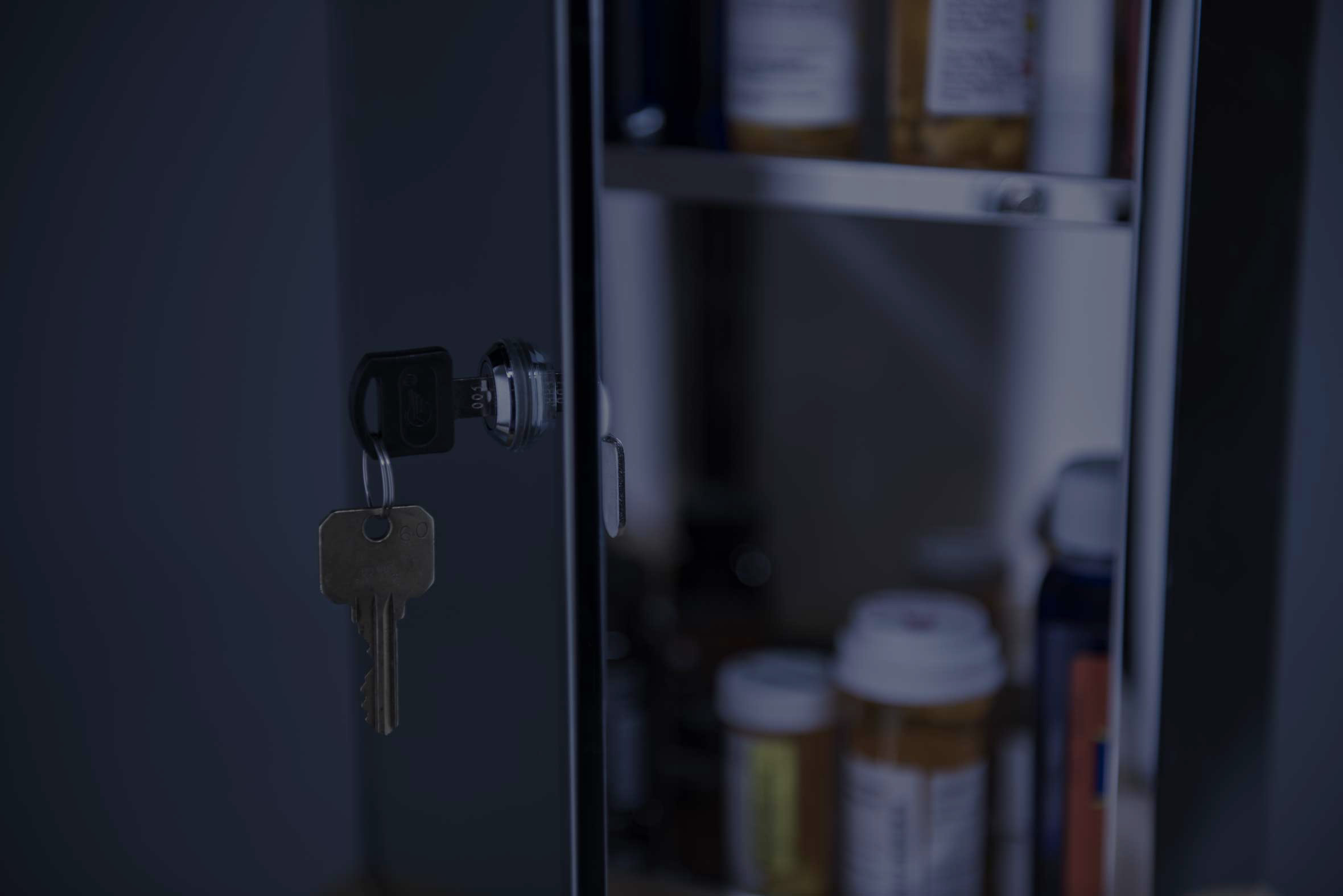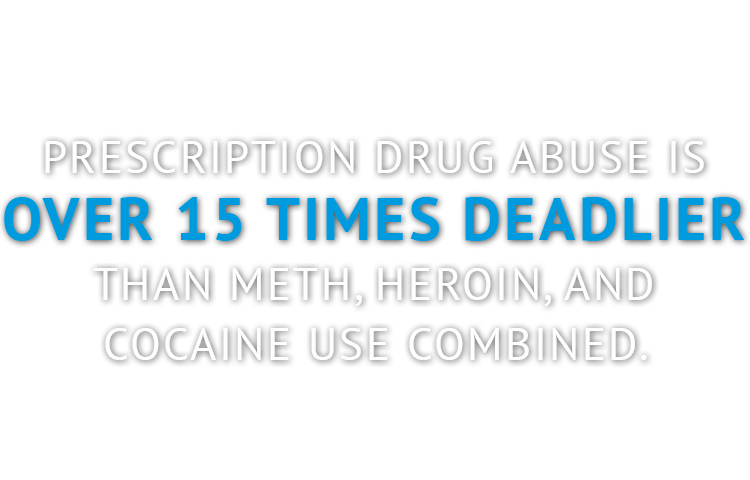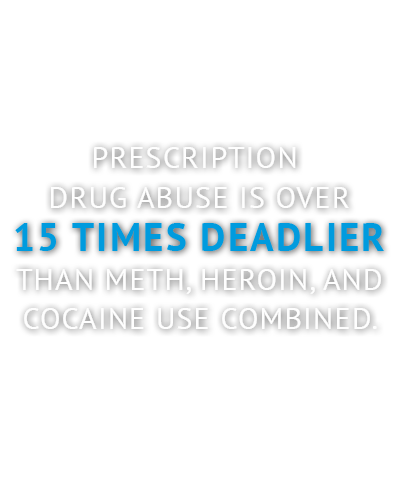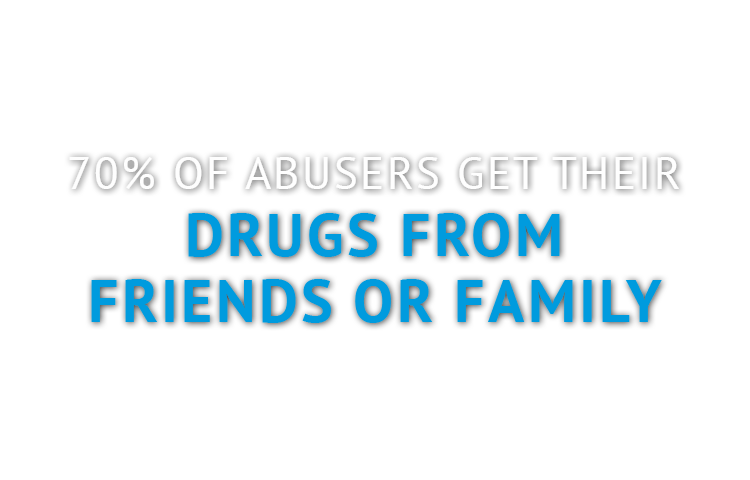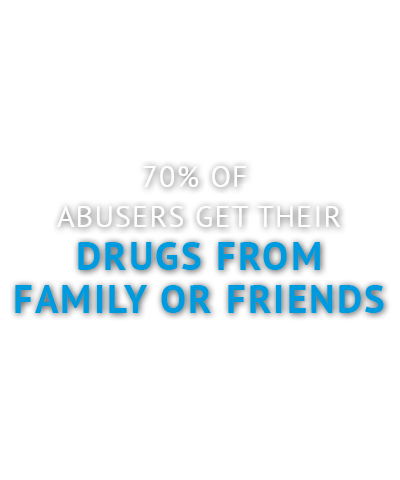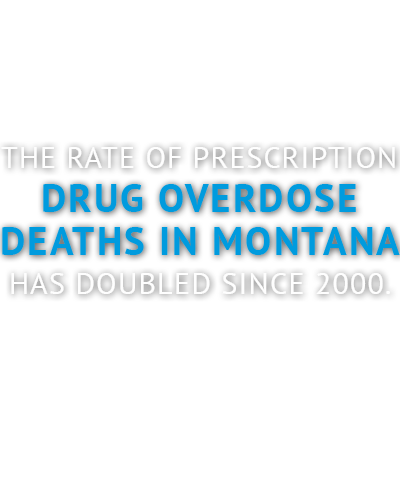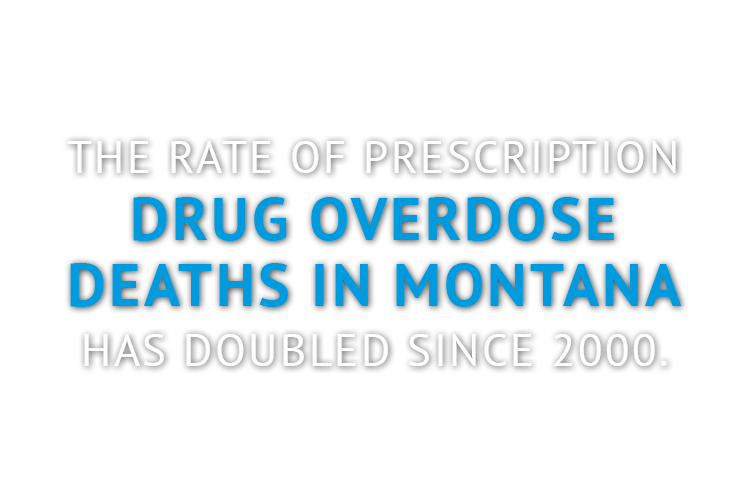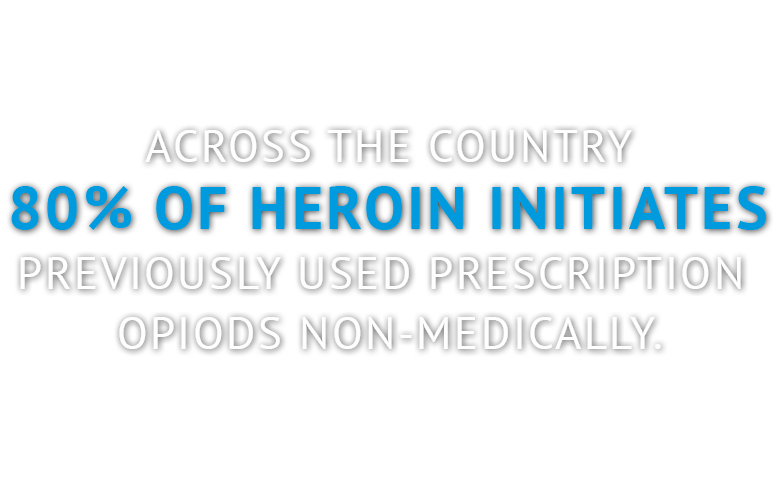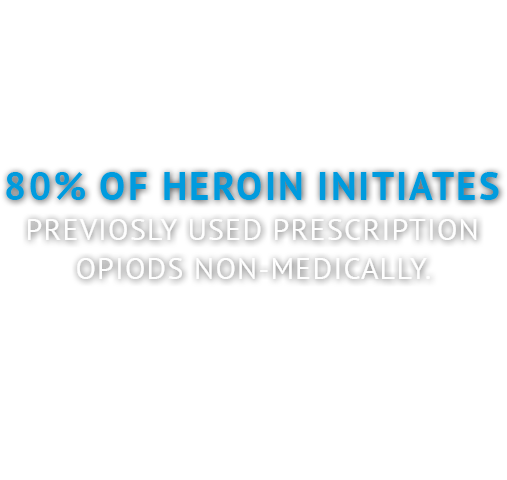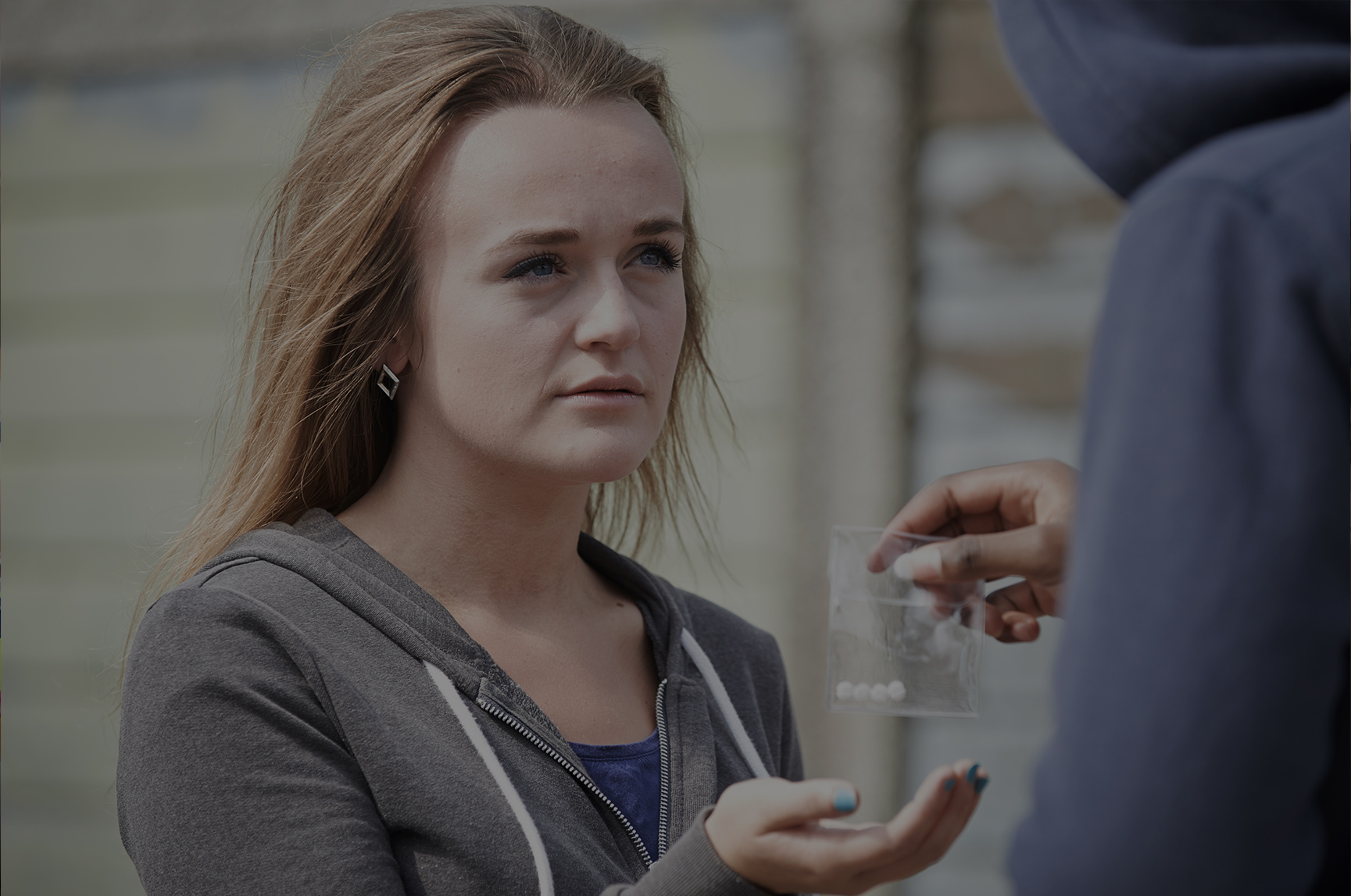PRESCRIPTION DRUG ABUSE ISN’T EASY
It isn?t easy to watch the terrible effects of prescription drug abuse. However, too many Montanans watch those they love change; watch families being torn apart; watch them lose everything. YOU can make a difference in preventing abuse and help save our friends, families, and neighbors. Resolve to end prescription drug abuse in Montana.
RESOLVE TO END PRESCRIPTION DRUG ABUSE
Learn how to prevent prescription drug abuse
STORIES FROM MONTANA
Willie Ramirez
For Willie Ramirez of Livingston, addiction to prescription drugs happened suddenly and innocently to his mother, Gail.
STORIES FROM MONTANA
Natalie Willis
Natalie Willis grew up in a loving home in Billings, Montana. But an early introduction to prescription pills grew into a devastating addiction.
SIGN THE PLEDGE
Sign the Pledge to end prescription drug abuse in Montana. Following these simple steps gives you the power to help prevent abuse.?
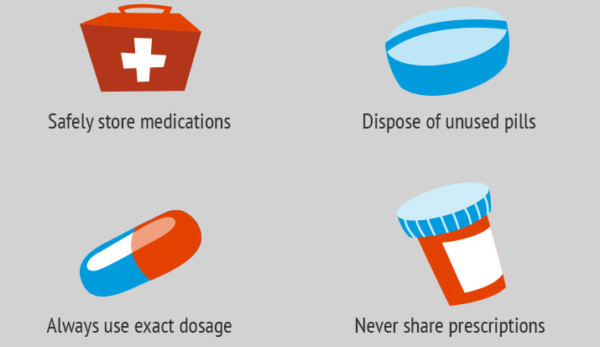
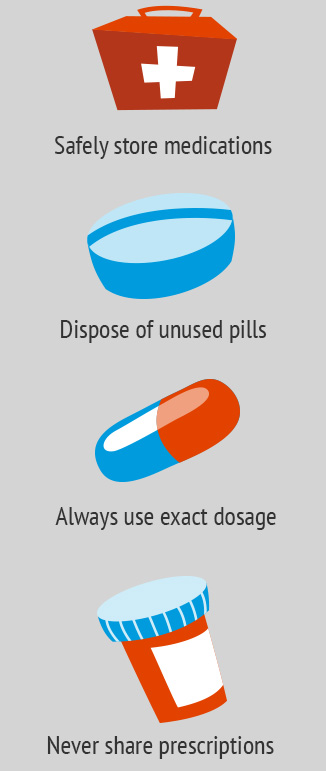
HOW TO PREVENT ABUSE
Resolve to practice responsible use of our own medications to set a good example for others.
- Follow all instructions given by the prescriber, and read the material that the pharmacy provides with the medication.
- Only take the exact dose of medication indicated by your doctor, and only take the medication for the issue for which it was prescribed.
- Don’t share your medication with others. Even though they are prescribed by a doctor, prescription drugs are not universally safe for everyone to take. Prescribers factor in a patient’s health history, weight, current condition, and more when writing a prescription. What is a safe dose for one person could prove to be deadly for the next.
Resolve to safely and responsibly store and dispose of your medication.
- Store your medication in a place where only you know to look that is not easily accessible to young children or pets. This will help reduce the chances of an accidental poisoning of your most precious family members.
- When a medication is no longer needed, it is best to get it out of the home. Safely and responsibly dispose of your prescription medications by bringing them to a permanent prescription drop box location or at a prescription drug take-back event in your community.
- A list of permanent drop box locations in Montana can be found here.
- Take your prescription drugs out of their original containers.
- Mix drugs with an undesirable substance, such as cat litter or used coffee grounds.
- Put the mixture into a disposable container with a lid, such as an empty margarine tub or sealable bag.
- Conceal or remove any personal information, including the prescription number, on the empty containers by covering it with black permanent marker or duct tape, or by scratching it off.
- Place the sealed container with the mixture and the empty drug containers in the trash.
RESOLVE TO talk to your loved ones about the dangers of misusing prescription substances.
- There’s a saying, “Your perception is your reality.” Until we start changing our perception of prescription drugs as being “not as dangerous” as other drugs, we will continue to see a reality where too many Montana families are devastated by prescription drug overdoses. The conversation starts in our government agencies, in our doctors offices, in our schools, and most importantly, in our homes.
CONVERSATION STARTERS
Resolve to start the conversation about simple ways to prevent prescription drug abuse.?
Here are some ideas to get started:
Whether it’s a prescription drug or an over-the-counter (OTC) medication, you should always read and follow all of the instructions. Be sure to note the correct amount to take, and never exceed the prescribed or OTC maximum dose.
Real life example: you have leftover pain medication from having your wisdom teeth removed, and you later hurt your back from heavy lifting. It is not OK to take the leftover painkillers from your wisdom teeth surgery to ease your back pain. You need to have your new injury evaluated by a doctor who can assess the best way to treat your pain.
Safely storing your medications is extremely important. Keep them somewhere they won’t be accidentally ingested by children or pets, or be easily found by someone who may have an addiction. You can also purchase a locking medicine cabinet or a locking medicine box.
A major misconception is that prescription drugs are not as dangerous as illicit drugs. When used correctly by a patient under the supervision of a doctor, prescription drugs are safe. However, when prescription medications are taken recreationally or by someone other than who they were prescribed for, they can be deadly.
The Centers for Disease Control and Prevention reports that of the 43,982 drug overdose deaths in the United States in 2013, more than half (22,767) were related to prescription drugs.
Teens pick up on family attitudes toward drug abuse and misuse. When students were asked how wrong they thought their parents would feel it would be for them (the students) to use prescription drugs not prescribed to them, 83 percent of Montana 12th graders responded. Very Wrong, with another 16 percent responding “Wrong” or “A little big wrong.”
Source: 2014 Montana Prevention Needs Assessment Student Survey State Report
Parents are one of the most important sources that teens need to hear from about avoiding drugs. Kids who learn a lot about the risks of drugs at home are at least 20 percent less likely to use drugs than those who do not hear that critical message from their parents.
Source: The Partnership Attitude Tracking Study: Teens & Parents 2013
LEARN MORE
What can you do with the drugs you have sitting in your medicine cabinet?
The first step is to keep prescription drugs locked, if possible, and out of the reach of children. Maintain a medications log (PDF) to track the number of pills you have and regularly check that none are missing. Be mindful of guests and strangers who enter your home, and keep medications and bottles out of sight.
Properly dispose of unwanted or unused prescriptions one of two ways:
- Drop your unwanted drugs at a permanent prescription drop box location (listed in the chart below) or participate in a drug take-back event in your community.
- Follow the five easy steps recommended by the Office of National Drug Control Policy below:
- Take your prescription drugs out of their original containers.
- Mix drugs with an undesirable substance, such as cat litter or used coffee grounds.
- Put the mixture into a disposable container with a lid, such as an empty margarine tub or sealable bag.
- Conceal or remove any personal information, including the prescription number, on the empty containers by covering it with black permanent marker or duct tape, or by scratching it off.
- Place the sealed container with the mixture and the empty drug containers in the trash.
The chart below lists the locations of permanent drop boxes across the state. For more information about organizing a take-back event in your community, contact us.
Billings: 4848 Midland RoadSolid Waste Division995-6500
| Belgrade: 91 E Central Ave. | Belgrade PD/City Hall | 388-4262 |
| Big Timber: 201 W. 1st. Ave. | Sweet Grass County Sheriff’s Office | 932-5143 |
| Big Sky 334 Town Center Avenue | Big Sky Medical Center(Pharmacy) | 247-8633 |
| Billings: 220 North 27th St. | Billings PD | 657-8460 |
| Billings: 2300 Lake Elmo Drive | MT Fish and Game Office | 247-2940 |
| Billings: 2915 Gabel Road | Military Reserve Center | 324-5404 |
| Billings: 2910 3rd Avenue N | Crime Prevention Center | 247-8590 |
| Bozeman: 30 North Rouse Avenue | Bozeman Police Department | 582-2234 |
| Bozeman: 615 South 16th St. | Bozeman PD/ Gallatin County Sheriff’s Office | 582-2100 |
| Bozeman: 925 Highland Boulevard | Highland Park Pharmacy (Entrance 3) | 414-1030 |
| Butte: 225 Alaska St. | Butte-Silver Bow Law Enforcement Dept. | 497-1125 |
| Butte: 400 S. Clark St. | St. James Healthcare Pharmacy | 723-2543 |
| Chinook: 420 Ohio St. | Blaine County Sheriff’s Dept. | 357-3260 |
| Columbia Falls: 130 6th. St., West | Columbia Falls Police Department | 892-3234 |
| Dillon: 2 S. Pacific Dr., #16 | Beaverhead County Sheriff’s Office | 638-3700 |
| Eureka: 855 Highway 93 North | North Lincoln County Law Enforcement Center | 297-2121 |
| Florence: 5549 Old US HWY 93 | Florence Pharmacy | 273-7979 |
| Glasgow: 501 Court Square | Valley County Sheriff’s Office | 228-4333 |
| Hamilton: 223 S. 2nd. St. (City Hall) | Hamilton PD | 363-2100 |
| Hamilton: 211 Main St. | Bitterroot Drug | 363-3611 |
| Havre: 520 4th | Havre PD | 265-4361 |
| Helena: 221 Breckenridge | Helena PD | 457-8830 |
| Helena: 2600 Winnie | Geneva Woods Pharmacy – Bergum Drug | 443-2540 |
| Kalispell: 200 Conway Drive | The Clinical Pharmacy | 751-7600 |
| Kalispell: 920 South Main | Flathead County Sheriff’s Office | 758-5585 |
| Laurel: 215 West 1st Street. | Laurel Police Department. | 628-8737 |
| Lewistown: 305 W Watson St. | Lewistown PD | 535-1800 |
| Libby: 512 California Ave | Lincoln County Sheriff’s Office | 293-4112 |
| Livingston: 414 E. Callender | Park County Sheriff’s Office | 222-4101 |
| Lolo: 103 Glacier Dr | Lolo Drug | 273-2322 |
| Malta: 314 S. 2nd Ave. West | Phillips County Sheriff’s Office | 654-2350 |
| Manhattan: 120 W Main St. | Manhattan PD | 284-6630 |
| Missoula: 435 Ryman | Missoula PD | 552-6316 |
| Missoula: 2230 27th Avenue W | Granite Pharmacy Missoula | 926-2940 |
| Missoula: 634 Eddy Ave. | Health Service Pharmacy 2nd Floor of Curry Health Center | 243-5167 |
| Plains: 214 E. Railroad | Plains Drug | 826-3552 |
| Polson: 5 4th Ave. E | Confederated Salish & Kootenai Tribes, Tribal Health Dept. | 745-3525 |
| Sidney: 300 12th Ave NW | Law & Justice Center | 433-2919 |
| Sidney: 216 14th Ave. SW | Sidney Health Center Pharmacy | 488-2100 |
| Sidney: 1159 S. Central Ave. | Shopko Pharmacy | 482-6401 |
| Sidney: 402 E. Main St. | White Drug Pharmacy | 482-1420 |
| St. Ignatius: 35401 Mission Dr. | Confederated Salish & Kootenai Tribes, Tribal Health Dept. | 745-3525 |
| Stevensville: 206 Buck Street | Stevensville Police Department | 777-3011 |
| Stevensville: 3804 Eastside Highway | Family Pharmacy | 777-5002 |
| Superior: 310 River St. | Mineral County Sheriff’s Office | 822-3555 |
| Townsend: 519 Broadway | Broadwater County Sheriff’s Office | 266-3441 |
| Troy: 301 E. Kootenai Avenue | Troy Area Dispatch | 295-4111 |
| White Sulphur Springs: 101 W. Crawford | Meagher County Sheriff’s Office | 547-3397 |
| West Yellowstone: 124 Yellowstone Ave. | West Yellowstone PD | 646-7600 |
| Whitefish: 275 Flathead Ave. | Whitefish Police Department | 863-2420 |
| Whitefish: 6475 Hwy 93 S | Alpine Apothecary | 862-7434 |
Programs
- DPHHS Network of Care for Behavioral Health
- National Suicide Prevention Lifeline or 1-800-273-TALK (free, confidential, 24/7)
- Narcotics Anonymous
- National Council on Alcoholism and Drug Dependence
- Rocky Mountain Poison Center for emergencies: 1-800-222-1222
- SAMHSA Substance Abuse Treatment Facility Locator
- SAMHSA Treatment Referral Line: 1-800-662-HELP (toll-free, all calls are confidential)
- State Approved Chemical Dependency Treatment Programs (PDF)
Resources
These statistics bring to light what?s going on in Montana:
Across the country, 80 percent of ?recent heroin initiates had previously used prescription opioids non-medically. – source
Nearly 70 percent of prescription painkiller abusers get their drugs from a friend or family member, and most get them for free. – source
From 2011-2013 prescription drug overdoses (where no substances other than Rx drugs were present) were responsible for at least 369 deaths and more than 7,200 hospital inpatient admissions and emergency department encounters in Montana. - source
While many parents (34 percent) believe there is little they can do to prevent their kids from trying drugs other than alcohol, parents are actually one of the most important sources that teens need to hear from about avoiding drugs. In fact, kids who learn a lot about the risks of drugs at home are at least 20 percent less likely to use drugs than those who do not hear that critical message from their parents. –source
Survival is powerful.
My brother is a prescription drug addict. He had a back injury about four years ago and has been overprescribed and abusing prescription drugs. He has been in rehab twice and is now clean, but because of job losses, reputation issues, and continuing pain he continues to suffer. He is only 28, was married and had a baby girl. Because of the addiction, he is divorced and trying to make life more manageable.
My brother was not selling, making, or distributing drugs, and was not a “criminal.” He was able to “doctor hop” and was able to get painkillers. Pharmacies didn’t ask questions, nor did doctors. We couldn?t get help for my brother until he committed a crime. Then, in a late night drive that he has no recollection of, he ran into a truck, barely missing three young girls camping in a tent in their front yard.
For the past few years, our family has been impacted with the reality of how difficult opiate addiction is to overcome and how ill-prepared any community, law enforcement included, is in dealing with this issue. It is not so much a lack of compassion as it is a general lack of knowledge as to the seriousness of the addiction. Individuals who have never had an addiction problem, myself included, have a difficult time understanding the extent of control it holds over the addict. I use the analogy of trying to describe the color blue to a blind person. It can almost be understood, but never completely.
Our daughter attended the Montana Chemical Dependency Center for six weeks. I can state unequivocally that six weeks is not near enough time. She has been in and out of court in three different counties, and is facing several felony charges. She is currently being held in the local jail on the charge of forging several prescriptions to obtain oxycodone at pharmacies in our town. It is my opinion that these individuals desperately need treatment, not incarceration. I’m not trying to excuse my daughter’s criminal behavior, just trying to understand the underlying cause. Both my husband and I are former law enforcement. We did our best to raise our daughter with a sound set of values and respect for the law. She does not come from either a broken home or an abusive childhood.
As a mother, I have firsthand knowledge of the devastating effects that misuse of prescription drugs can have on the user and family members. My 38-year-old daughter’s addiction became apparent to me only a few years ago. For many years she was able to successfully hide it from the family. I attribute her success at hiding the addiction because prescription drugs are small and easy to hide. They do not have an odor that one can detect. There are many containers that can disguise them as mere vitamins.
From the start, when I began to notice behavior changes in my daughter, I contemplated a mental disorder or depression, which led to psychologists and psychiatrists prescribing more drugs. Then an injury that required my daughter to have surgery catapulted her into massive prescription and non-prescription drug use: OxyContin, Fentanyl patches, methamphetamines, alcohol, cocaine, marijuana, etc. She was getting them anywhere she could. Stealing them, buying them on the street, over the internet, and doctor shopping.
About two years ago, when I was sure of what was happening and when a crisis presented itself, I drove my daughter to the Kalispell hospital emergency room, desperate for help. Even the emergency room physicians and attendants didn’t seem to have a standard protocol to follow when it came to a mother bringing her addicted adult daughter to the emergency room. I was finally able to find help for my daughter outside the state of Montana. She checked into to an open-ended treatment program in Canada and stayed for 60 days. My daughter has been out of treatment for over a year. She relapsed within the first few months of being home, but a very proactive aftercare program which included Suboxone, pulled her back into recovery. She continues to work her recovery plan every day with the help of 12-step programs she attends.
I’m not naive to believe she is cured. I’ve learned a lot about the “Science of Addiction” thanks to the treatment program in Canada, and further reading and study on the subject. I am continually amazed at the number of people who do not understand this debilitating and devastating disease of the brain.
It killed him.
Lois’s son had already beaten prescription drug abuse once when he was diagnosed with cancer in his early 30s. “As a result of the cancer,” Lois said, “he hit the pill lottery.”
Doctors prescribed him OxyContin, hydrocodone and others, Lois said. Eventually, he was put on methadone, a synthetic opioid often used to treat patients “de-toxing” from drugs like heroin. Lois said she’s not entirely sure why her son was on methadone. Certainly, it was less expensive than the other pain-relievers he had been taking.
By the time her son’s cancer went into remission, Lois’s son had fallen back into drug addiction. She said he was on methadone for several months before his death. He turned 32 four days before he died in the spring of 2007. Just days before, his doctor had written him a prescription for 90 more methadone pills.
But he wanted to get off the drug.
“The last conversation I ever had with him, he was talking about getting off methadone,” she said. “He was planning his life, he was buying a house. He believed he had the world by the tail and he didn’t live to see it.”
The young man died with his friend, who had also taken methadone.
“He left behind a son who will never get to have his daddy hug him and say “I love you,” a broken-hearted mother, two brothers and a sister whose lives will never be the same without their big brother,” Lois said. “He believed he would live to enjoy a drug-free life, but was outsmarted by the predator.”
I met my husband five years ago. We were young and in love. He liked to go to the occasional party and hang out with friends, but I had never seen any addict tendencies from him. He is from a family of addicts and has watched them struggle their entire lives with their addictions. I thought that was what made us so much alike. We were different from our families and we wouldn’t follow in their footsteps.
We had our first daughter about two and a half years ago. Shortly after she was born, I started noticing a big change in him. He started telling little lies all the time about things that didn’t matter. He wanted to get into selling drugs, and it was something I wanted to stay far away from. So, he started selling marijuana behind my back and buying us really nice things. I started noticing his moodiness; he called into work a lot more. I had no idea what had changed at first until I found pills on more than one occasion. He was using oxys, and he didn’t just take them, he was snorting them. It turned out he was selling marijuana to support his habit and was using 800-1,000 milligrams a day. He had lost weight, was very pale, had scabs from head to toe. When he finally came clean and told me about everything he had been doing, he said it was going to be hard, but he needed me to get through it. He said he would stop; he proposed to me that weekend. I wanted to be there to support him, so I stayed with him. I ended up becoming his enabler and very co-dependent.
We were married in August of 2009, and he promised he would get help after we were married. He went to a rehab facility out of state and seemed to be doing wonderfully! He came home and seemed like a completely different person, the person I fell in love with. It only took about two or three weeks of being home in the same environment, around the same people, and he relapsed. He gave rehab a second time six months later and this time went to a local facility. Our daughter and I could visit him every weekend and see his progress. I had never seen him so proud or ambitious in our five years together. When he got out of treatment he was attending meetings every day and I thought he was doing great!
About four weeks after he graduated the program, I went to pick him up from work and found him slumped over in the company vehicle. He had overdosed on Klonopin. I thought he was dead. It took about three minutes before I could get him to respond, and I called one of his co-workers to come help me get him in my car. His co-worker talked me out of bringing him to the hospital saying if he can talk and walk he is fine. I didn’t know at the time how fatal it could have been. Thankfully, he made it through after a full two days of sleep. After that incident he admitted to me he had relapsed again. He was around it all the time at work, among family and friends. The temptation was too strong. We are now separated and he is still not clean.
I wish I could see him doing better and I wish there was something I could do for him so his daughter did not have to see him like this. We have lost everything. His truck was repossessed. He sold our TV; surround sound system, guns and gun safe. He took both of our entire tax returns and spent it on pills. His whole life revolves around finding a way to get high. I am afraid it will kill him.
My mom is also a prescription drug addict. She and my husband have used together for the past two years. The only difference between the two of them is that my mom is prescribed her pills and my husband is not. My mom has osteoporosis, fibromyalgia and two bulging disks in her back. She claims she is in excruciating pain every day of her life and that she NEEDS to take her pills. Otherwise, my mom says, she wouldn’t be able to move out of bed. She cannot work because of the amount of pain she is in, and she runs out of her prescription the first week she gets them. I have watched her life completely deteriorate because of the obsession from the pills. She has also pawned her car title, and her car is about to be repossessed. She is being evicted from her apartment. Her gas and electric has been shut off, and she “can’t afford” to get it turned back on. Every expensive piece of jewelry, electronics, anything of value she has owned has been sold to the pawn shop for money for pills.
When I was growing up she was an amazing mother. She never used any type of drugs and worked three jobs to support my brother and me. It wasn’t until she was diagnosed with these problems that I saw her downfall.
I have watched two people I love battle this horrible addiction and many other friends and family members abuse prescription drugs. It is definitely something that deserves more attention.
In 1973, I was a teenager addicted to prescription drugs. I was involved in robbing local pharmacies and “making doctors,” which means I would go to the doctor faking kidney stones or some other ailment to get narcotics. I also would knock on doors to “use the phone” and look in the medicine cabinet. In April of that year, my boyfriend and two other young men robbed a local drug store. We all overdosed and my boyfriend died in the back of my car. My dad found him. My friend and I were sent to reform school because we were juveniles. Months later we escaped and hitchhiked to San Francisco, where I became addicted to heroin.
One day, I was in the hospital and a nurse must have called Montana. I received a “non-refundable” bus ticket home, and I got on that bus. After returning to Butte, I continued to use any kind of drug and alcohol. In 1976, I discovered I was pregnant. For the rest of the pregnancy, I stayed clean and sober. What a miracle. I thank God that my baby girl was born healthy. Unfortunately, my drug addiction was much more powerful than me.
Within a few months, I returned to use. During this time, my husband became a drug and alcohol counselor. We divorced. He remarried and raised my beautiful daughter in a drug-free home. We are currently rebuilding a relationship after decades. I thank God she is able to forgive a mother who chose drugs over motherhood. I feel my joy, often tinged with many regrets. My life continued through decades of drug addiction, jails, and five years in federal prison for meth. I can only imagine the horror and heartbreak that I have caused my parents and family.
After being released from federal prison in 1996, I went on to college for environmental engineering. For more than three years, I stayed clean and attended college while working full time at a domestic abuse shelter. One night in 1999, I felt lonely and that life was passing me by. I went out and drank. Within a few hours, I called up and old friend and had a needle in my arm. My life rapidly descended into hell, as I quit school, quit my job, and went back to the streets dealing meth. In the next two years, I received more possession charges and ended up forced into treatment. In 2003, I completed inpatient treatment and returned to college. I earned a registered nursing degree and realized that I wanted to work with addicts. I am now an addictions counselor and I thank God every day for my life. But this story doesn’t end. My little sister was never a “drug addict.” She became addicted to prescription narcotics after a work-related injury. When I saw the extent of her addiction and observed how easily she obtained narcotic prescriptions from her doctor, I was appalled.
Through many years of my friends dying through overdose, murder, suicide, I never experienced such horror as my sister’s addiction. Through the past years, I lost communication with my sister. She would rarely answer the phone, and our contact was brief. When I did visit, there were often bent spoons in the sink and blood dripping down her arm. Her fingers were usually puffed up like sausages. We went to the emergency room innumerable times over abscesses and infections. Many times, she was too loaded to even realize that we were at the hospital. I tried to take care of her.
Then came the most frightening night of my life. On October 23, 2006, I went to my sister’s house. The doors were wide open, heat blazing, toilet overflowing, and syringes filled with blood on coffee tables, in the sink, in the refrigerator. My heart almost stopped as I saw my sister arms rolling like windmills, tongue cracked like a desert, delirious, and naked. I got her semi-dressed and stuffed her in my car.
My mind was in total chaos. We rushed to the ER. That night they tested her for spinal meningitis. A few days later, my sister was diagnosed with brain and liver abscesses from IV drug use. She could not communicate, nor could she even complete the basic functions of life. She spent about a month in the hospital, and then she was transferred to a nursing home.
But she had not hit bottom. Within a few weeks of leaving the nursing home, my sister returned to active use of opiates. I was out of my mind. This was one of the most difficult parts to realize that nothing in the world will save her and that I was powerless to help her anymore. Every time I went to her house, there would be bent spoons in the sink, little pieces of cotton in the ashtray and drops of blood on her hands and wrists.
Finally, miraculously, one day she reached true bottom.
She decided to be done. I will never forget that morning. She was sitting at the kitchen table, had just done a shot, owed people money, and was wondering what to pawn. Amid many tears, she made a decision to stop. That day was a true miracle.
This is a true account of my sisters near death experience. May her story touch many hearts and inspire other lives.
It was June 13, 2010. I had looked forward to this day for almost a year. My great-niece Dusty as getting married in the sleepy, little town of Roundup. Even though it was only a short drive away, my husband, sister and I opted to rent a motel room for the night and just “get away from it all.” We knew we would more than likely have some drinks at the reception and it just seemed like a good idea to spend the night.
The wedding was beautiful. It felt so good to be home after so many years away. I had designated myself black sheep of the family many years before and had very little to do with my family. It was especially bad after Mom and Dad passed. There just didn’t seem to be a need for a family get-together. We talked, we visited, and I saw people I hadn’t seen for years. I was carefree. My son was at my house with his daughter and his niece. It felt so good to know he was eight months clean and sober from prescription drugs. I had let him come home again, and he willingly submitted to my random drug tests. So far, he was clean every time.
Praise God! My son was back. He had accepted the Lord when he and his daughters were living in the Rescue Mission Family Shelter. Now he was the old Jimmy I used to know before the addiction had broken every rule and every trust and stripped our family of all that was good. I tear up at this point in my writing because what self-respecting mother would ever have their son living at the Mission? Well, I have an answer that doesn’t satisfy even me these days: I was trying to show him that this is where addiction got you. I was also trying to bring some sanity back to my own home. When there is an addict in your home, things spin out of control.
The wedding was over and we had done a whole lot of visiting and very little drinking. We were hungry. Little did we know that Roundup had not even so much as a gas station open, so we opted to go ahead and go home.
I called my son to check in and let him know we would be coming home. Jimmy sounded a bit sleepy, but it was 3 a.m., after all.
Dread overtook me as I was speaking to him. Oh my God! His children’s mother was there with him! I could hear her talking in the background. She was not to be at the house. What was she doing there. Was my son using again? Why was she there! These thought raged in my head, but I very calmly asked Jimmy “Why is Mary there?”
“Please Mom, don?t be mad,” he said. “She didn’t have anywhere to go and she wanted to see the kids. I was torn because I loved this girl as my own, but I also knew she was still out there, still using and I was scared as hell that my son was using, too.
I felt the most overwhelming dread. It was like someone was stepping right in the middle of my chest and slugging me in the gut at the same time. I felt physically ill. My husband and sister tried to console me, but the crushing feeling would not lift.
We pulled into the drive way, and I went to the door with a mixture of dread and anticipation. Dread because I knew my fears could very well be realized. Anticipation because I wanted badly to be reassured that my fears were unfounded. I walked in to the house and walked straight to my bedroom. I was startled by the fact that my daughter-in-law was in my room on her hands and knees, looking for something on the floor. I calmly asked her what she was doing and she raised her big brown eyes up to me and said “Huh?”
I knew at that instant she was high as a kite on prescription medications. I had been down this road so many times in the past 10 years with my son that I knew the nodded, dreamy look. I knew the irrationality of crawling across the floor because you couldn?t walk. I had seen it so many times. I felt a mixture of pity and revulsion. I loved this girl, but what was the answer with her?
I was so tired. All I wanted was my bed and a good rest before facing tomorrow and dealing with the task of asking Mary to leave our house. Tough love is exactly that it’s tough. It never crossed my mind to go to Jimmy’s bedroom to check on him. After all, he had his addiction whipped. My son was okay, now.
The next thing I was conscious of was someone beating on my door and screaming hysterically. I bolted from my bed, my husband right behind me. I jerked our door open with such force that I tore a hinge off completely. My daughter-in-law was standing at the door screaming, “He’s dead! I think he?s dead!”
I am feeling a bit nauseous at this point in my writing and the words are not coming so easily now. The site that greeted me is forever etched in my mind. There at the counter in the kitchen sat my beloved son, chin resting on the counter. I have never seen a dead person before and yet, somehow, I knew. He was gone.
My baby, my only son, my rock was gone. My husband called 911. They tried to help, but deep in the recesses of my broken heart I knew my son was gone. Events from here on out are sketchy. I remember the horror of that plastic backed paper sheet covering my son. I remember the horrified screams. I know not if they were coming from me, or my daughter-in-law or Jimmy’s little girl. The chaos was unbelievable, the pain unbearable, the questions unending. I didn’t give a fig what funeral home was to pick up the body. My God, that was my son. This process took about two hours while my son lay cold and lifeless on the floor. Autopsy? Go ahead, but I knew what he died from. Prescription drug overdose. I didn’t need anyone to tell me that. I needed someone to tell me why I couldn’t save him.
The next few days flew by in a blur of numbness and pain. For about three weeks, all I really wanted to do was sleep and cry. I was actually mad because I was alive. I wanted to die. Gradually, I pulled myself out of bed and went to fall semester. I passed my classes but remember little. I cried at the drop of a hat. I hated myself and everyone around me.
Today, almost eight months later, I still cry a lot. I?m crying now and I reckon I?ll probably cry until the day I die. There is no pain like losing a child. I am forever altered in my life. I am not the same person anymore.
Parents, be aware of what’s in your medicine chest. Teens are getting high all the time on their parents left over medications. Those who take medications such as opiates that the doctor prescribes for you, be careful. Thank you for taking time to read this. I know I’m not a writer but, this somehow has helped me along my journey.
Help spread the message to your friends and family of safe prescription drug use, storage, and disposal. Some ideas to become active in the fight against prescription drug abuse include:




